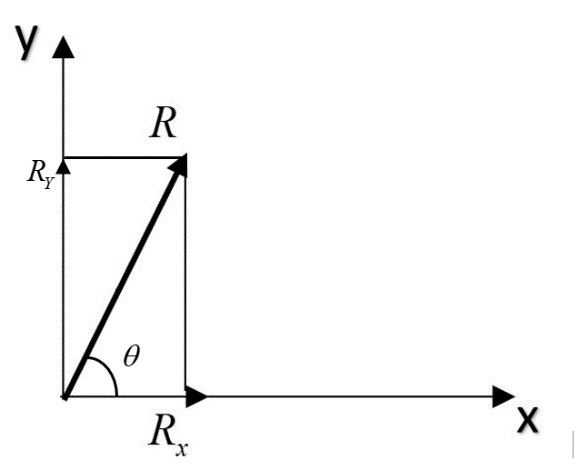Question
Question: What do you mean by rectangular components of a vector? Explain how a vector can be resolved into tw...
What do you mean by rectangular components of a vector? Explain how a vector can be resolved into two rectangular components in a plane.
Solution
There are majorly two types of quantities, scalar and vector quantities. All the quantities are divided into these two categories. Scalar quantities are those quantities, which have only magnitude eg – mass, speed, pressure, etc. Vector quantities are those which have both magnitude and directions eg – weight, velocity and thrust. The special fact about vectors is that we can resolve it into components.
Complete step by step answer:
Rectangular components means the components or parts of a vector in any two mutually perpendicular axes. This could be understood by an example as illustrated below.

Let a vector quantity ‘R’ inclined at an angle θ from the x-axis. By convention, we can split the vector ‘R’ in two rectangular components. As shown in the figure, the vector ‘R’ is split into two components;
Rxalong x-axis and Ry along y-axis. This is an extremely important and useful property of vectors. Using it, we can solve complex problems very easily. Also, we can write the values of these components as;
Rx=Rcosθ
Ry=Rsinθ
Additional Information: For any two general vectors, we have the magnitude of their resultant R=A2+B2+2ABcosθ. Since we have split the given vector ‘R’ into two independent vectors, we can see that doing this won't change the magnitude of the original vector.
Here A = Rx=Rcosθ and B = Ry=Rsinθ
Hence, putting in the formula:
R=A2+B2+2ABcosθ
⇒R=(Rcosθ)2+(Rsinθ)2+2(Rcosθ)(Rsinθ)cos90∘
As cos 90∘=0
R=R2[(cosθ)2+(sinθ)2]+0
Also, sin2θ+cos2θ=1
So, R=R2=R
Hence proved.
Note: One must not confuse that we can take the vector components only along axes that are mutually perpendicular. One can also find the component of a vector about any axis which inclination with the vector is given, provided the magnitude of the vector must not change.
